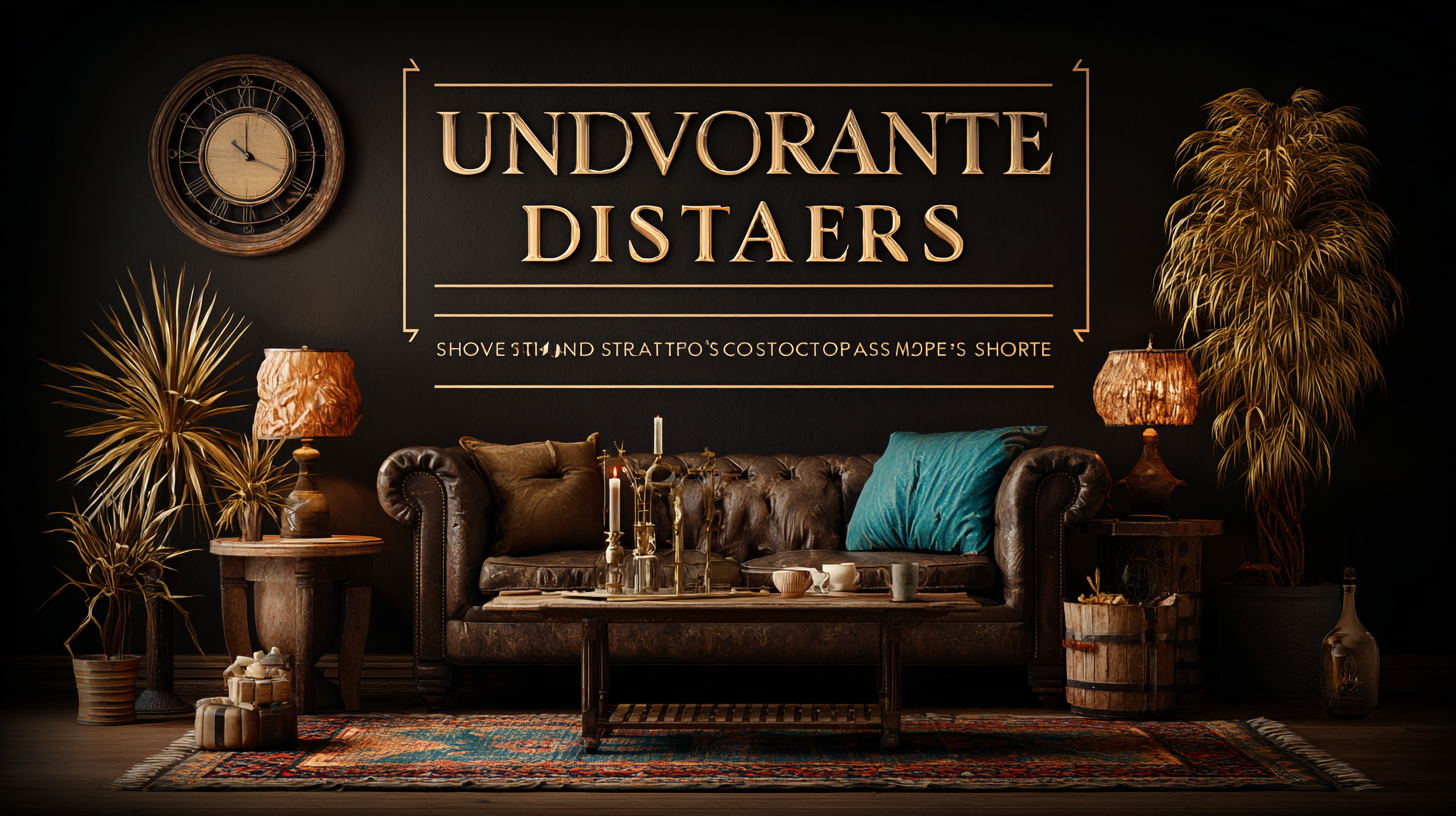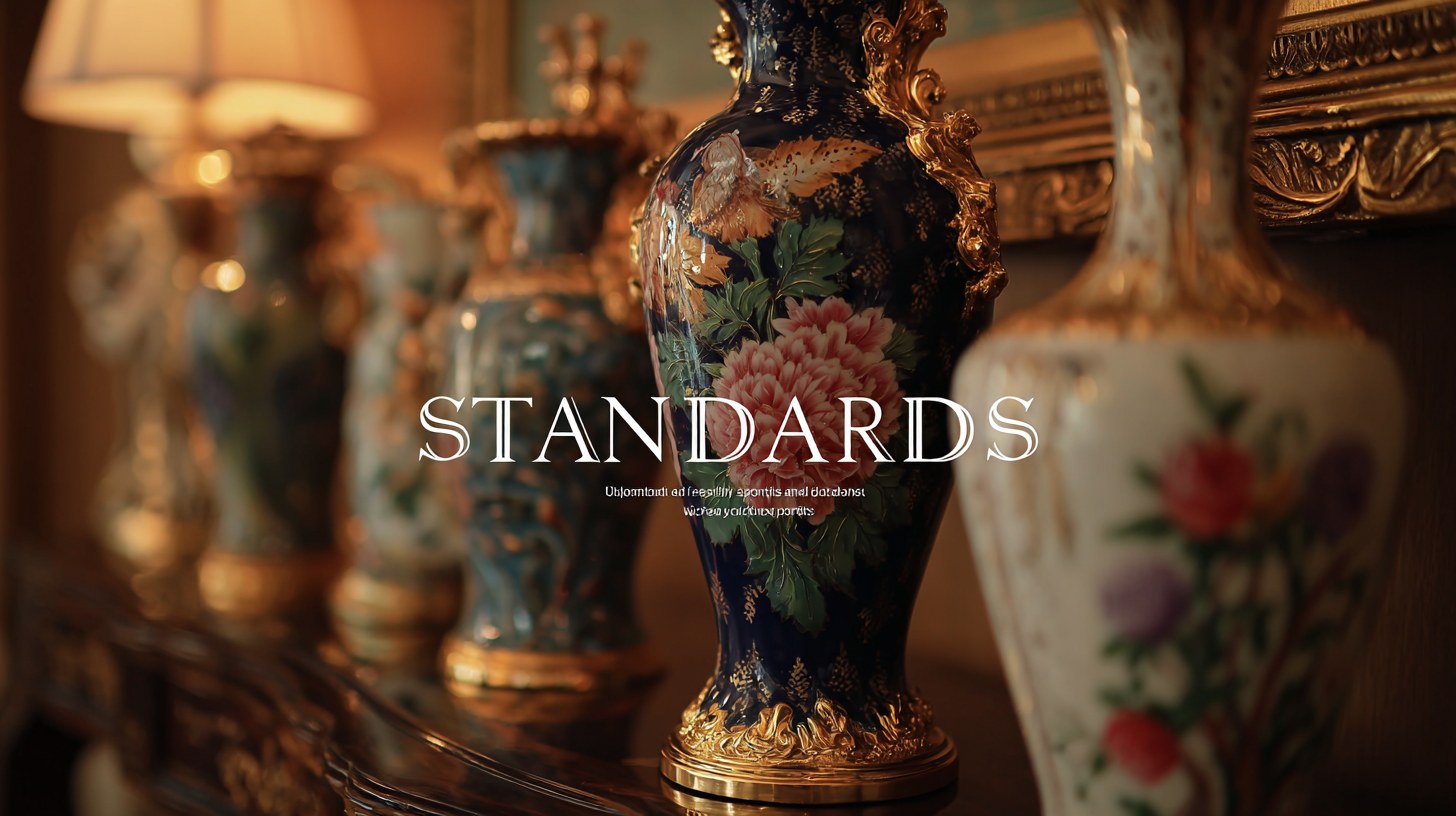In today's fast-paced world, the importance of aesthetic appeal in our living and working spaces cannot be overstated. Decorative items serve as crucial elements in enhancing the ambiance and reflecting personal style, making the selection process both exciting and challenging. With the rise of "China's intelligent manufacturing" and its global appeal, the market is flooded with a myriad of options, each promising quality and design. However, understanding the industry standards is vital when choosing the best decorative items to ensure longevity and satisfaction.

This blog will guide you through the essential criteria to consider, helping you navigate the myriad choices available while emphasizing how to identify those pieces that not only beautify your space but also embody quality assurance. By the end, you'll be equipped with the knowledge to make informed decisions, transforming your environment into a reflection of your taste and lifestyle.
When selecting decorative items for your space, understanding industry standards is crucial to ensuring quality and aesthetic appeal. These standards often encompass materials, craftsmanship, and safety guidelines that can directly impact your decor choices. Familiarizing yourself with these benchmarks not only helps in making informed purchases but also enhances the longevity and visual integrity of your decor.
**Tip 1:** Look for certifications or labels that indicate compliance with industry standards. Items like upholstery and textiles should adhere to specific fire safety regulations, while other materials may require eco-friendly certifications. This ensures that your chosen decorative items meet recognized safety and health criteria.
**Tip 2:** Assess the craftsmanship of the items you are considering. High-quality decorative pieces often exhibit attention to detail, such as flawless finishes and sturdy construction. This is especially important for custom or handmade items, where understanding the artisan's reputation and their adherence to quality standards can lead to better investment choices.
By keeping these standards in mind, you can curate a space that not only reflects your personal taste but also adheres to quality and safety norms in the decorative industry.
 When selecting decorative items for your space, it is essential to consider various factors that can significantly impact your decision. One critical aspect is the market size of the decorative industry itself. Recent reports indicate that the global market for decorative items is projected to reach substantial heights by 2032, with expectations of continuous growth driven by increasing consumer spending and a rising interest in home aesthetics. For instance, the market for container homes, a growing segment within décor, is forecasted to surge from $64.75 billion in 2024 to an impressive $100.87 billion by 2032. This growth showcases how consumer preferences are evolving towards more innovative and sustainable living solutions.
When selecting decorative items for your space, it is essential to consider various factors that can significantly impact your decision. One critical aspect is the market size of the decorative industry itself. Recent reports indicate that the global market for decorative items is projected to reach substantial heights by 2032, with expectations of continuous growth driven by increasing consumer spending and a rising interest in home aesthetics. For instance, the market for container homes, a growing segment within décor, is forecasted to surge from $64.75 billion in 2024 to an impressive $100.87 billion by 2032. This growth showcases how consumer preferences are evolving towards more innovative and sustainable living solutions.
Additionally, understanding industry standards is vital when selecting alternatives for your space. Various reports highlight the necessity of adhering to these standards to ensure quality and compliance with consumer expectations. The Software as a Service market, which influences various industries, including home décor software solutions, reflects this trend, with a projected market size expected to witness robust growth as businesses increasingly leverage technology to enhance customer experiences. Evaluating these key factors will not only guide your choices but also align them with market trends and consumer demands, ultimately enriching the ambiance of your living or working environment.
When selecting decorative items for your space, considering the materials used and their sustainability is essential. Opting for items crafted from natural, renewable resources can significantly reduce your environmental footprint. Look for furnishings made from reclaimed wood, bamboo, or recycled metals. These materials not only add unique character to your decor but also contribute to a more sustainable lifestyle.

Tip: Always check for certifications like FSC (Forest Stewardship Council) or SCS (Scientific Certification Systems) to ensure that the materials are sourced sustainably. This guarantees you're making an informed choice that supports environmental responsibility.
Additionally, consider the lifecycle of decorative items. Choosing durable, timeless pieces can be more sustainable than constantly replacing trendy, cheaply made items. Invest in quality over quantity, which typically leads to a lower overall impact on natural resources over time.
Tip: Incorporate multipurpose decor that serves various functions. For instance, ottomans that double as storage can help reduce clutter while enhancing the aesthetic appeal of your space, proving both practical and environmentally friendly.
When selecting decorative items for a space, the balance between aesthetics and functionality is crucial. According to a report by the Home and Garden Research Institute, nearly 75% of consumers prioritize appearance when making purchasing decisions for decorative items. However, this focus on aesthetics often overlooks the importance of functionality; items that don't serve a practical purpose can lead to clutter and inefficiency within a home or office environment. For example, multi-functional furniture and decor, such as storage ottomans or decorative shelves, can enhance the visual appeal of a space while providing necessary utility.
Moreover, the latest trends indicate a growing preference for sustainable and multifunctional designs. A study by the National Home Décor Association found that 68% of interior designers are increasingly recommending items that harmonize beauty and utility. This trend encourages consumers to invest in decorative pieces that not only elevate the visual charm of their surroundings but also address practical needs. By choosing items that are both aesthetically pleasing and functional, individuals can create spaces that are not only beautiful but also livable and efficient.
When it comes to decorating a space, traditional decor elements can sometimes present unique challenges. However, innovative alternatives are emerging that not only address these issues but also elevate the aesthetic appeal of interiors. According to a recent report by the American Society of Interior Designers, nearly 80% of homeowners are leaning towards modern solutions when choosing decorative items. This shift highlights a desire for both functionality and style in home decor.
Tip: Consider multifunctional furniture and decor pieces that blend traditional design with modern aesthetics. For instance, a sleek, contemporary coffee table that incorporates hidden storage can reduce clutter while serving as a stylish focal point in the room.
Additionally, materials play a crucial role in modern decorative choices. A survey from the Home Improvement Research Institute noted that sustainable and eco-friendly materials are being prioritized by 65% of consumers. This trend reflects a growing awareness of environmental impact while still showcasing personal style.
Tip: Explore options such as reclaimed wood or recycled metal for your decor items. These materials not only bring a unique charm to your space but also contribute to sustainability efforts, striking the perfect balance between traditional and modern design.
